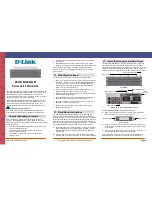
VE Port Configuration Limits
Platform
Interface Type
10G Fabric Extenders
Cisco Nexus 5500 Series Switch
Not supported
16 VE Ports
VE Port bound to an
Ethernet Interface
Not supported
4 VE Ports
VE Port bound to an
Ethernet Port-Channel
Interface
VNP Ports
Connectivity from an FCoE NPV bridge to the FCF is only supported over point-to-point links. These links
can be individual Ethernet interfaces or members of an Ethernet port channel interface. For each FCF connected
Ethernet interfaces, a vFC interface must be created and bound to the Ethernet interface. These vFC interfaces
must be configured as VNP ports. On the VNP port, an FCoE NPV bridge emulates an FCoE-capable host
with multiple enodes, each with a unique enode MAC address. A VNP port interface binding to MAC address
is not supported. By default, the VNP port is enabled in trunk mode. Multiple VSANs can be configured on
the VNP port. The FCoE VLANs that correspond to the VNP port VSANs must be configured on the bound
Ethernet interface.
The spanning-tree protocol (STP) is automatically disabled in the FCoE VLAN on the interfaces that the VNP
port are bound to.
Interface Modes
Each physical Fibre Channel interface in a switch may operate in one of several port modes: E mode, TE
mode, F mode, TF mode, TNP mode, and SD mode. A physical Fibre Channel interface can be configured
as an E port, an F port, or an SD port. Interfaces may also be configured in Auto mode; the port type is
determined during interface initialization.
In NPV mode, Fibre Channel interfaces may operate in NP mode, F mode, or SD mode.
Virtual Fibre Channel interfaces can only be configured in F mode.
Interfaces are automatically assigned VSAN 1 by default.
Each interface has an associated administrative configuration and an operational status:
•
The administrative configuration does not change unless you modify it. This configuration has various
attributes that you can configure in administrative mode.
•
The operational status represents the current status of a specified attribute such as the interface speed.
This status cannot be changed and is read-only. Some values may not be valid when the interface is
down (for example, the operational speed).
Related Topics
Configuring and Managing VSANs, on page 113
Configuring N Port Virtualization, on page 51
Cisco Nexus 5500 Series NX-OS SAN Switching Configuration Guide, Release 7.x
8
OL-30895-01
Configuring Fibre Channel Interfaces
Information About Fibre Channel Interfaces
















































